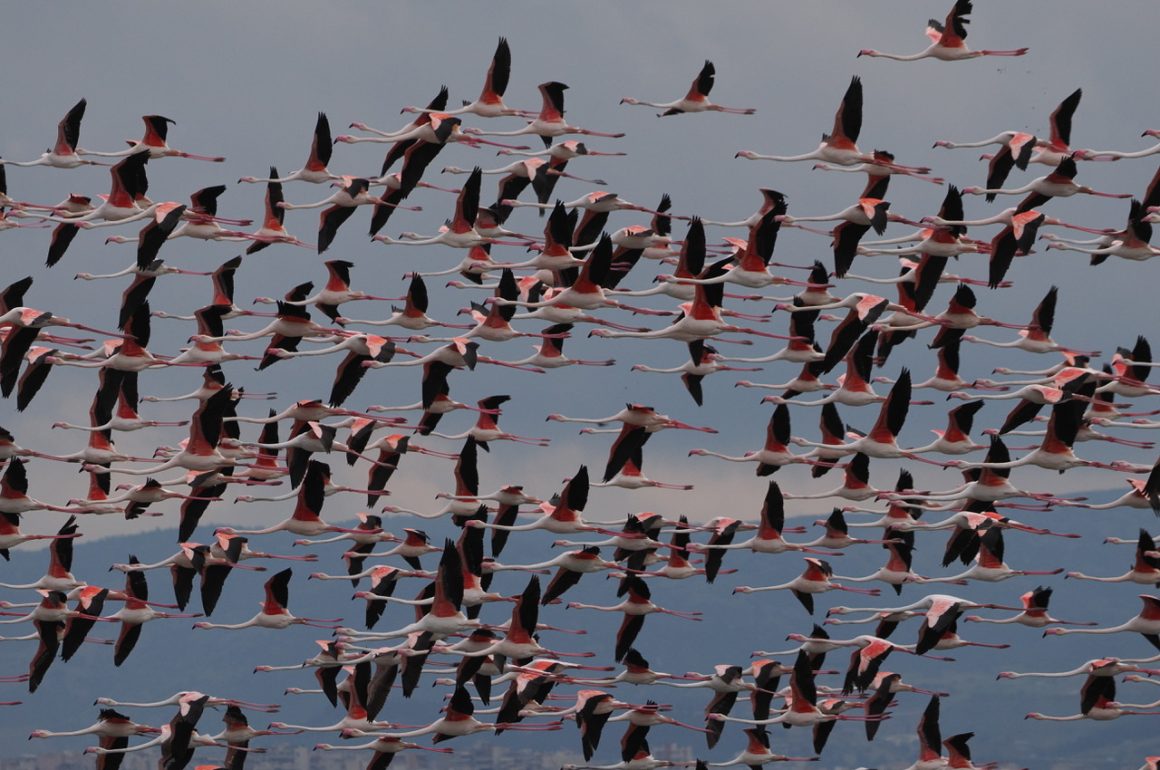
According to the brochure you are likely to be given if you visit the Axios-Loudias-Aliakmonas National Park, “the four river-mouths and extensive lagoons form one of the largest and most complex wetland systems in Greece, with salt marshes and water meadows, coastal islets, riparian forests and rice fields providing suitable bird habitats”. It sound terrific, but be warned, it’s not the easiest place I’ve been to looking for birds, as some of the sites are tricky to find, and you will have to do many miles of driving on gravel roads to get to any of them.
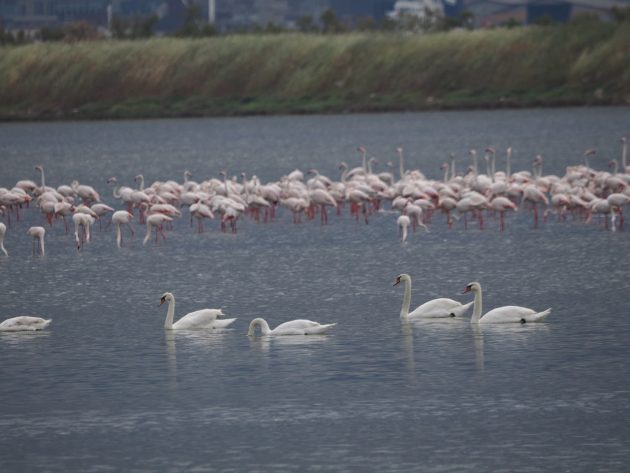
Mute Swans and Greater Flamingoes on the Kalohori Lagoon
The national park covers covers an area of 33,800ha, while its official designations include being a Ramsar site, an Important Bird Area (IBA) and part of the Natura 2000 network. It’s easy to get to as it’s only a few miles west of Thessaloniki, the second largest city in Greece. Steve Mills describes it well in his book Birdwatching in Northern Greece (an essential if you plan to visit the area): “Previously a huge delta supplied by four rivers – the Axios, Aliakkmon, Gallikos and Loudias – it is now largely agricultural and is punctuated by these rivers running through embankments to the sea. The wetland complex once formed one of the most important Greek sites for birds, but most has been lost, both to agriculture and as a result of the rivers being canalised and no longer flooding the area. Good habitat is now squeezed to the river margins and the coast.”
Though I’d visited it before, my lack of success in finding good sites had largely put me off visiting again, but earlier this month I spent some time looking for birds in this interesting, if challenging, landscape. My companions and I started our quest at the Kalohori lagoons, an excellent site for waders, though to get to the lagoons you have to drive through the deeply unattractive industrial complex of Kalohori.
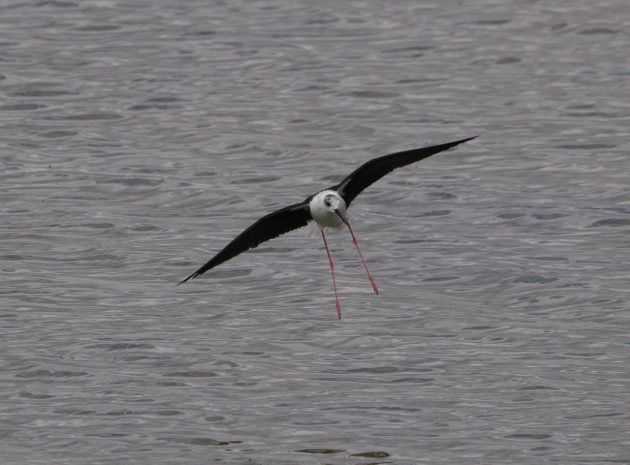
Black-winged Stilts are common breeding birds in the delta
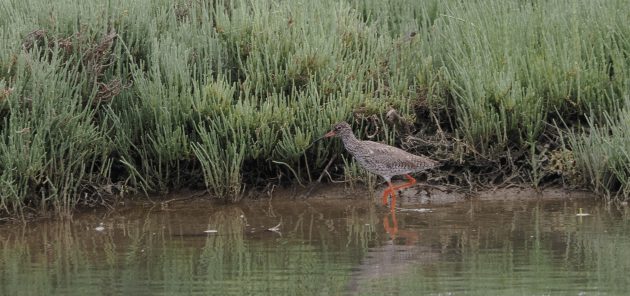
Surprisingly, this was the only Common Redshank that we found
Late on a Sunday afternoon the area was busy with day trippers, not birdwatchers, though we did meet five young Greek birders who were red-hot bird finders. They kindly pointed us in the right direction to see a Terek Sandpiper, a rare and irregular passage migrant here, and the first one I’d ever seen in Greece. For some time the bird was fast asleep, so there were few real clues to its identity, but it eventually woke up and co-operatively flew to an island not too far from us. A lifer for my three friends, it gave us great views. With its rather short yellow legs and upturned beak, there’s no other wader you can confuse a Terek with. Where was it heading? The most likely destination was Russia, but these birds also breed in Ukraine and Belarus. There are also a few pairs in Finland, where I have seen them.
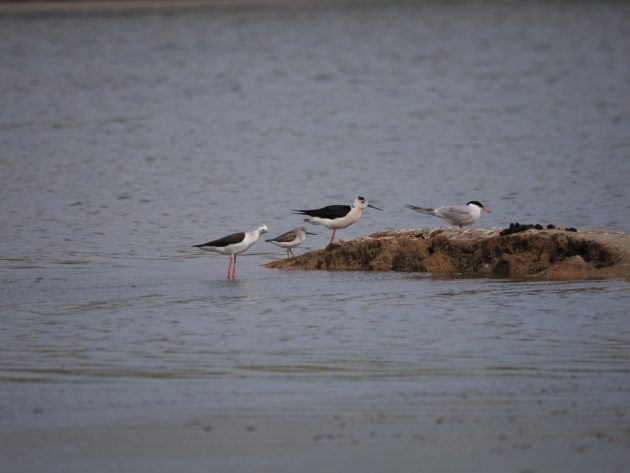
Terek Sandpiper, in company with Black-winged Stilts and a Common Tern
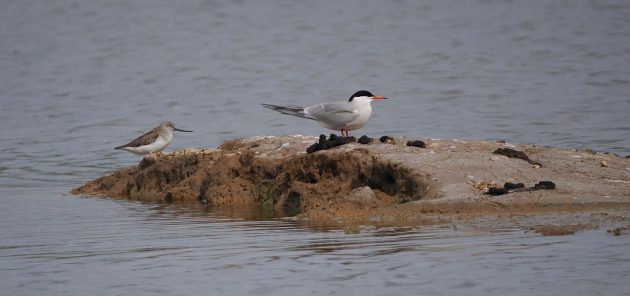
Frustratingly, though there were plenty of waders to be seen on the lagoons, the light was bad, as most of the birds were quite distant and into the light. We did manage to see a good assortment, even so, with Ringed and Kentish Plovers, numerous Little Stints and Curlew Sandpipers, a single Wood Sandpiper and a few Ruffs.
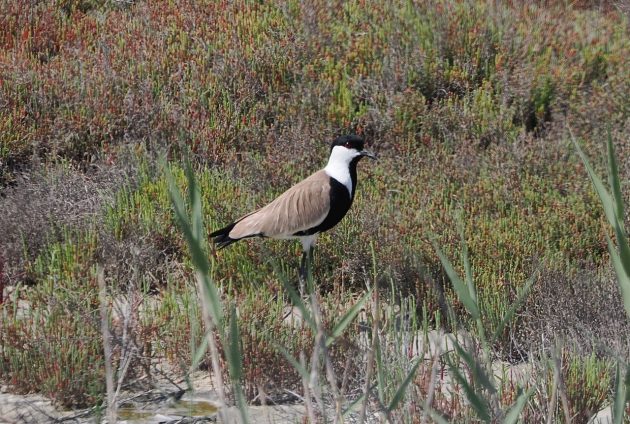
A few pairs of Spur-winged Lapwings nest in the delta
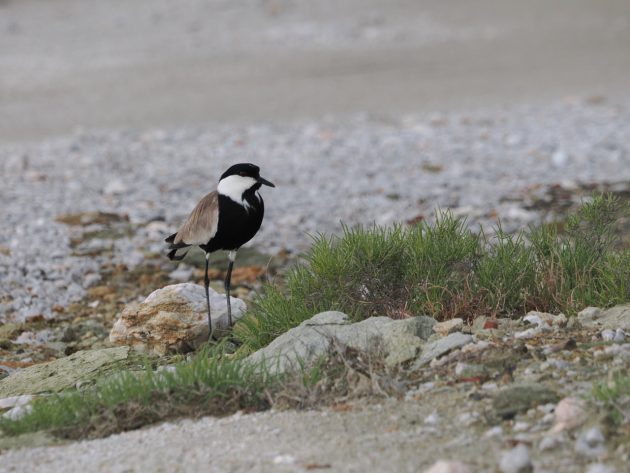
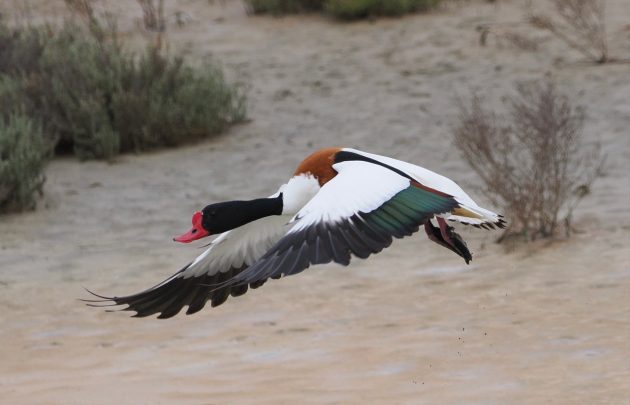
Though many species of ducks winter in the delta, few remain to breed. One that does is the Shelduck
Over the next 36 hours we managed to find no fewer than 18 species of waders, most of them familiar birds from home, such as Oystercatcher, Avocet, Redshank and Black-tailed Godwit. A few pairs of Spur-winged Plovers (or Lapwings) nest here, and these we eventually found quite easily, though we drove many miles to do so. We were also delighted to see scores of Collared Pratincoles, the most graceful of waders, and one that behaves much more like a tern than a wading bird.
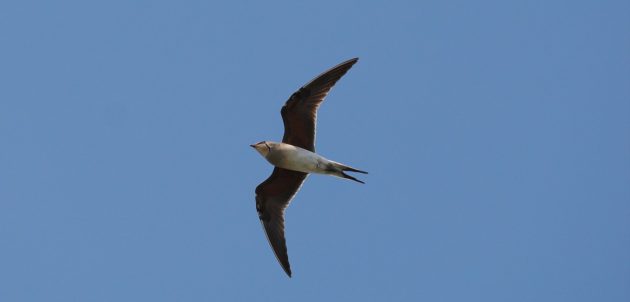
A Collared Pratincole overhead
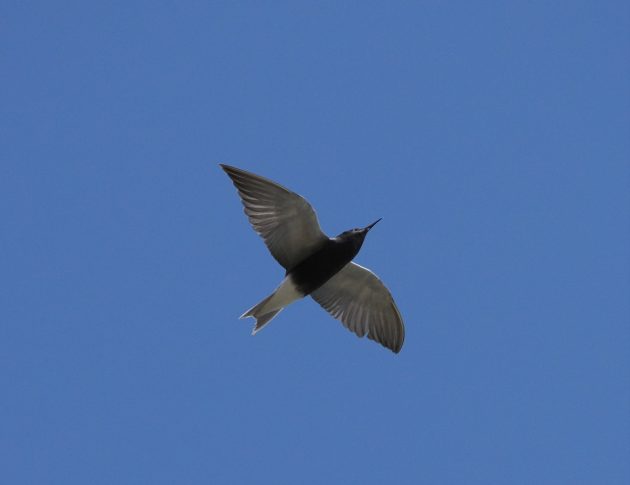
We saw many Black Terns
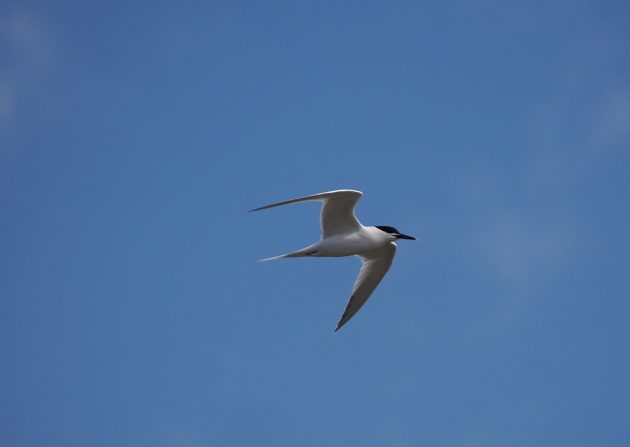
Sandwich Terns (above and below) are common in the delta
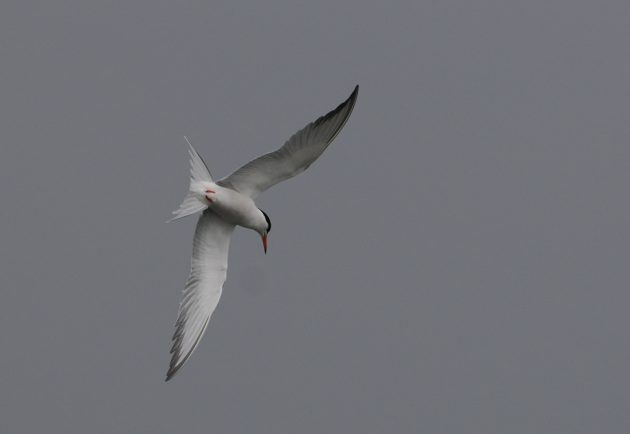
There were terns in variety, too, and we notched up no fewer than eight species. The commonest were Sandwich and Common Terns, which nest here, but we also had great views of migrant Black Terns (which proved difficult to photograph because of the light), and a couple of White-winged Terns. The latter are the most eye-catching of the three species of marsh terns, but they are the rarest on passage here. Gull-billed Terns are similar in size and appearance to Sandwich Terns, but they have distinctive voices and are usually seen hawking over arable fields. We saw them several times.
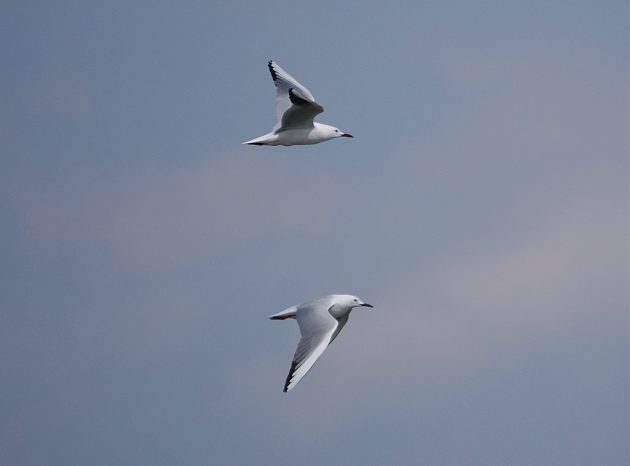
Slender-billed gulls (above and below)
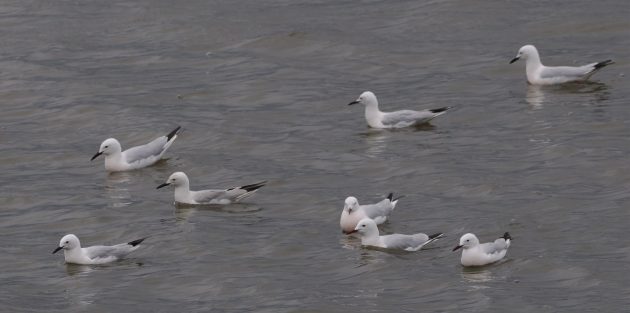
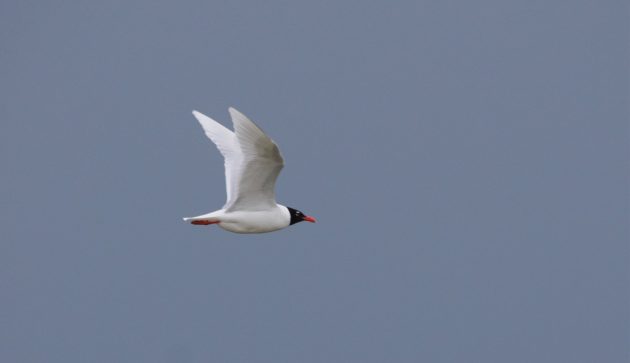
Mediterranean Gull, and (below) a large colony of these gulls
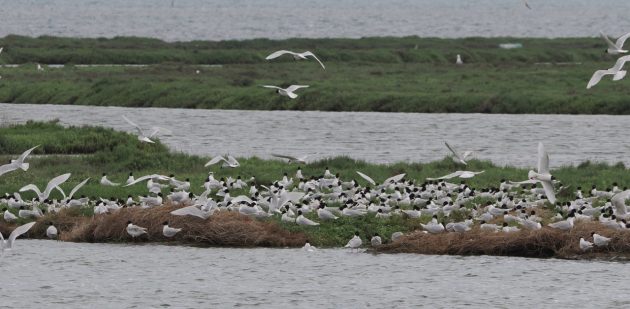
There was an interesting variety of gulls. We saw just half a dozen Little Gulls, dainty, attractive birds that really live up to their Latin name of Larus minutus, for they are minute compared to the delta’s resident Yellow-legged Gulls. Our favourite gull was the elegant Slender-billed, of which we saw many. In breeding plumage these attractive gulls have a distinct pink blush to their white breasts. We also saw numerous Mediterranean Gulls, coming across a huge colony on an offshore island that probably numbered around 3,000 pairs.
Apart from the ever-present Marsh Harriers we saw relatively few birds of prey. White-tailed Eagles nest in the delta, but we failed to see any. We did watch both Red-footed Falcons and Hobbies hawking for dragonflies over an extensive lagoon at Nea Agathoupoli, where there is an impressive brick-built tower hide. I had visited this hide before in the winter, when it was firmly locked, but this time it was open and well worth visiting.
The southernmost part of the park is the Alyki Kitrous Lagoon, part of which is a salt works. Though you can’t drive here, there are footpaths you can explore around the lagoon. Our best find here was a pair of Great Spotted Cuckoos, noisy birds that were difficult to over look. We also found Stone Curlews, as well as good flocks of Curlew Sandpipers, with many of the latter in their wonderful brick-red breeding plumage.
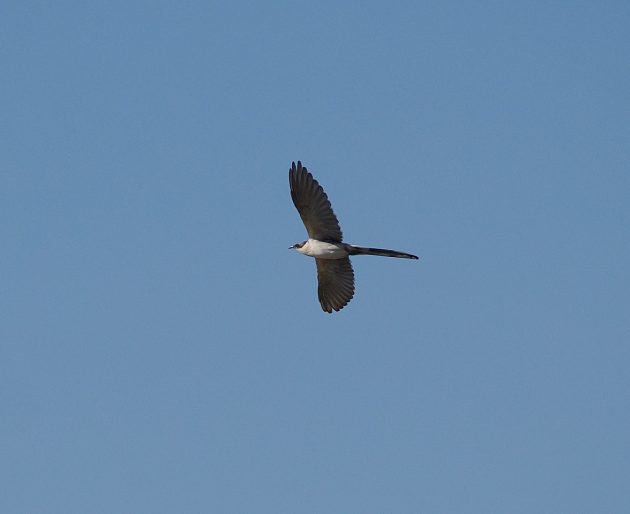
Great Spotted Cuckoo
Perhaps the bird of the delta is one I have yet to mention: the Greater Flamingo. They are widely distributed on suitable lakes and lagoons around the Thermaikos Gulf, and we saw many hundreds of them. Curiously, Flamingoes were once rare birds in Greece, and until 1982 there were fewer than 30 records. You can now see them in the delta area throughout the year. With so many present it’s inevitable that they will eventually try and breed, if they have not done so already.
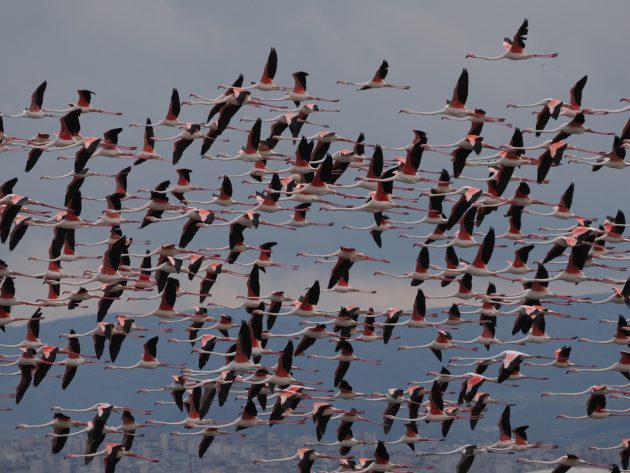
Greater Flamingoes
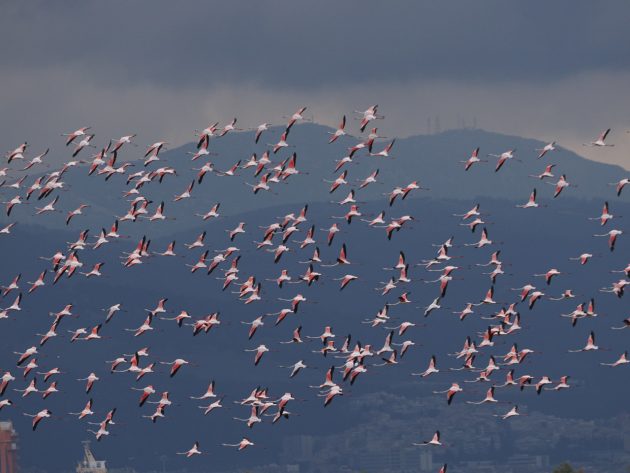
Birding the delta was hard work, while it’s not a place where you will meet many other people looking for birds, despite the fact that the National Park authority encourages birdwatchers. However, it’s an area that is worth visiting, despite the challenges of doing so, and it makes an interesting extra destination to add to a visit to Kerkini.
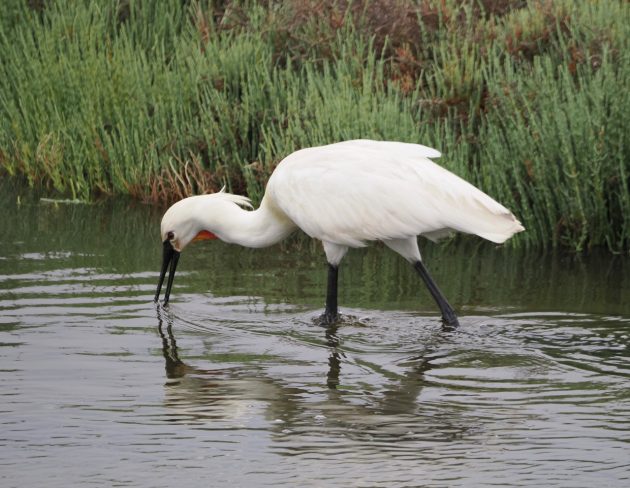
Spoonbills feed in the delta


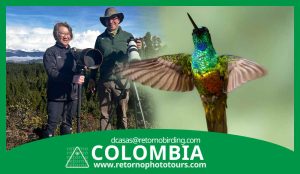
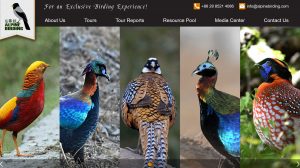
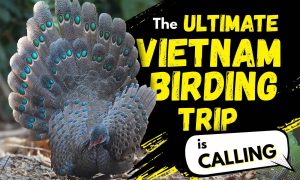
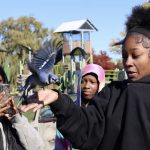

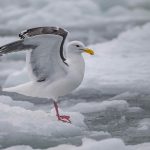
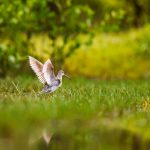
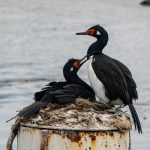
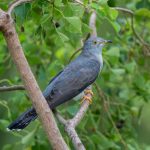

I’ve never seen a Great Spotted Cuckoo, and seeing it perched in the field guide, I was sure it is the easiest of birds to ID. And then I saw your photo and realized, if I’d seen one in flight, I’d have no clue!
I’ve never been to 4 deltas, partially because I didn’t know which motorway exit to use.
Seems like a perfect spot for rewilding – there’s enough potential, judging from the gorgeous pictures. Dragan, visit Portugal in February: you can sometimes see the cuckoos from the motorway, no need to exit 😉
You normally hear Great Spotted Cuckoos before you see them: they are very noisy birds.
(And I should add that I have captioned a Common Tern as a Sandwich Tern.)
Found the Great Spotted Cuckoo. And the Spoor-wing.